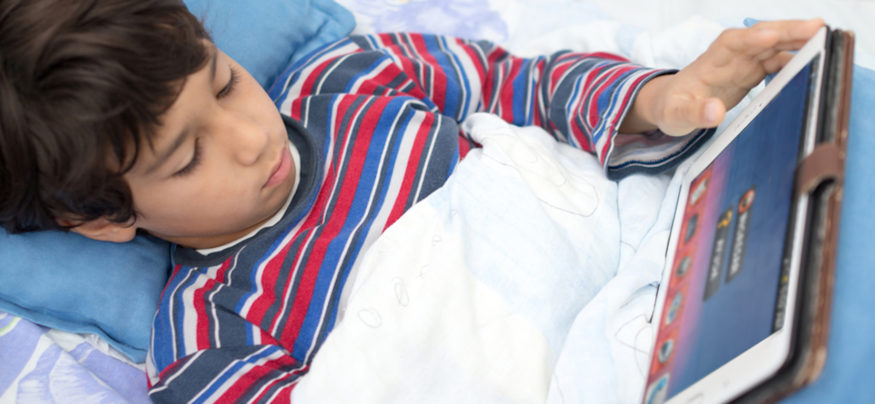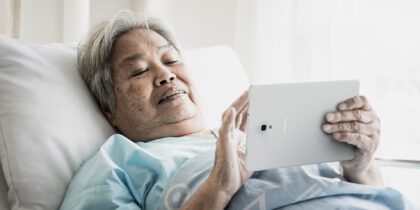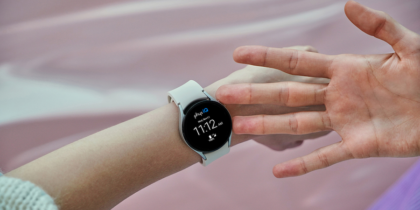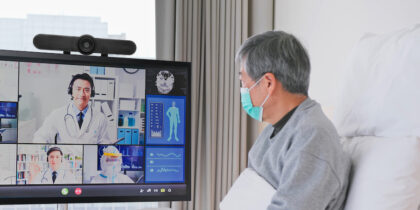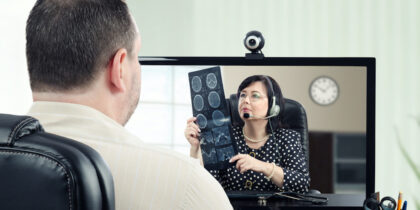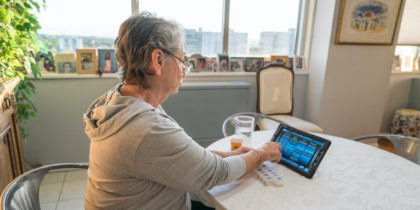There’s nothing more precious than a child’s life. Parents buy baby monitors to listen out for their cries, and smart socks and crib pads to monitor their breathing, movement, heart rate and oxygen saturation — information that shows children are healthy and alerts families to problems. With sick kids, doctors want that data, too.
Remote patient monitoring has become a popular way for healthcare providers to ensure that patients stay healthy at home. More than two-thirds of hospitals and health systems have already deployed these solutions, according to Spyglass Consulting, mostly to monitor adults with chronic diseases.
But in March 2015, Children’s Health in Dallas launched its comprehensive remote patient monitoring program — the first of its kind for a pediatric hospital in the U.S.
One of the nation’s largest pediatric hospitals, Children’s Health treats kids and adolescents with complex medical conditions from all over the state of Texas, including those who need organ transplants. These transplant patients require intensive medical supervision after surgery, as well as ongoing education and medication management.
To get children home faster and help them stay healthy over time, Children’s Health is using Vivify Health’s care management platform and Samsung Galaxy tablets. Now, medical providers can stay connected with patients and families no matter where they live.
Getting Sick Kids Home to Heal
For the program’s first phase, Children’s Health is focused on two patient populations: recent liver transplant patients and adolescents who have had kidney transplants at some point in their lives.
Many recent liver transplant patients are very young children, who spend several weeks in the hospital and then follow up twice a week for a month after discharge. Now, they leave the hospital with a Vivify/Samsung kit that includes the Galaxy tablet and Bluetooth-enabled biometric devices, such as blood pressure monitors, weight scales and pulse oximeters. Parents use these devices to capture daily biometric data and answer a series of questions on the child’s condition.
With real-time access to vital patient data, physicians and nurse practitioners can ensure patients are stable, wherever they are. According to Kristy Carlton, the Vivify Health clinical consultant for Children’s Health, “Physicians have even sent patients home early due to the fact they were enrolled in the program.”
Patients also do one of their weekly follow-up appointments via video on the tablets, enabling physicians and nurse practitioners to interact with children and families where they’re most comfortable — at home. Just as importantly, patients who live outside the Dallas area don’t have to travel as often.
“After transplant, sometimes the families have to sort of split up,” says Dr. Dev Desai, chief of pediatric transplant at Children’s Health. “The patient and the mother may stay in Dallas for one to two months in either a hotel or Ronald McDonald House … [and this] creates a hardship for these families being split apart like that.”
Providing Education That Lasts a Lifetime
With post-kidney-transplant adolescents, Children’s Health has different goals. Most of these patients have already recovered from surgery but need ongoing education and oversight to help them comply with medication management, without relying as much on their parents.
These patients receive kits during their regularly scheduled checkups. While they also capture and transmit biometric data, the focus is on tracking medication adherence and teaching them to take responsibility for their own care.
“One of the main reasons adolescents lose their organs or have to have second transplants is because of medication nonadherence,” says Dr. Desai. “The RPM program will teach our patients how to be active in the ongoing management and monitoring of their health as they grow into … adults, and it will hopefully help prevent unnecessary complications down the road.”
Looking Toward the Future
Children’s Health is currently collecting data on three objectives it has set for this program: increased patient and family satisfaction, improved patient adherence to medication and treatment plans, and decreased emergency room visits and hospital readmissions.
The organization will publish the results later this year but is already reporting benefits. According to Vivify, Children’s Health has noted 100 percent staff satisfaction and 95 percent patient satisfaction.
After a successful first run with transplant patients, Children’s Health will soon add two new patient populations to the program. The IT staff is also integrating Vivify’s platform with the organization’s electronic health records system so providers can access all patient data in one place.
“For the first time ever, we are able to view important patient data in real time to help improve coordination of care and decision making across multiple specialties,” says Julie Hall-Barrow, vice president of virtual health and innovation at Children’s Health. “This technology will help pave the way for higher-quality patient interactions, decreasing costs through early intervention and all-around better care management.”
To learn more, read the Children’s Health case study.
